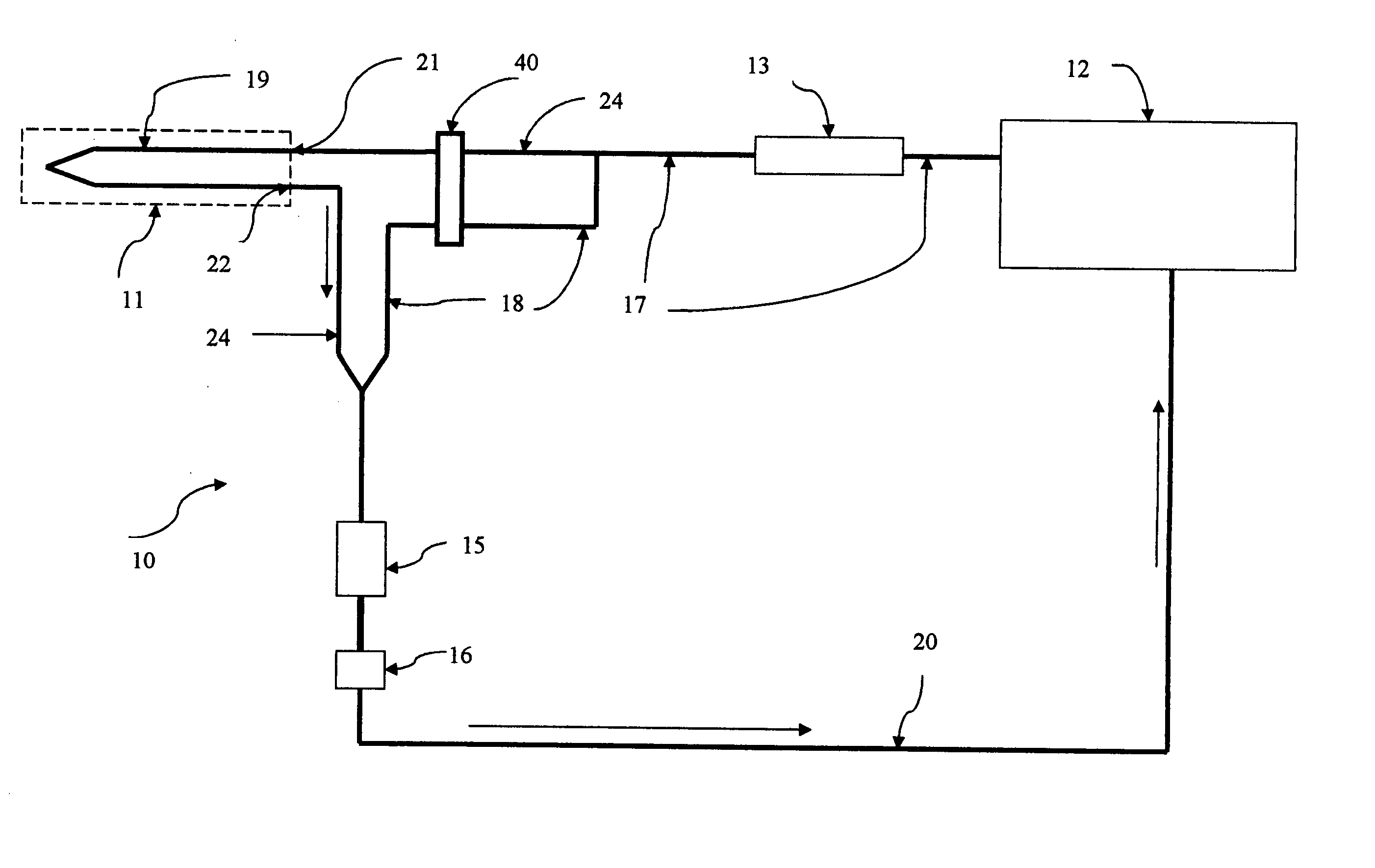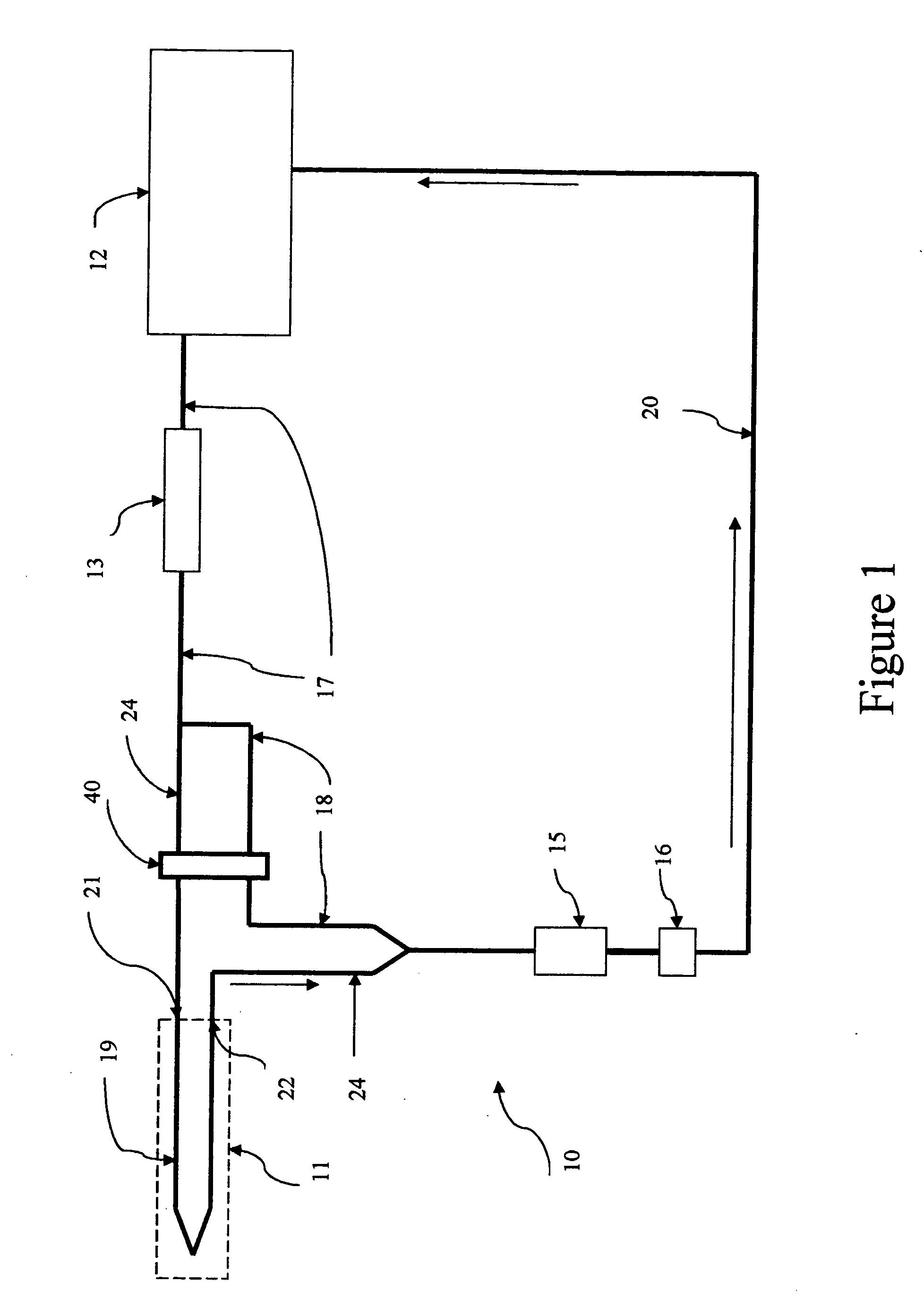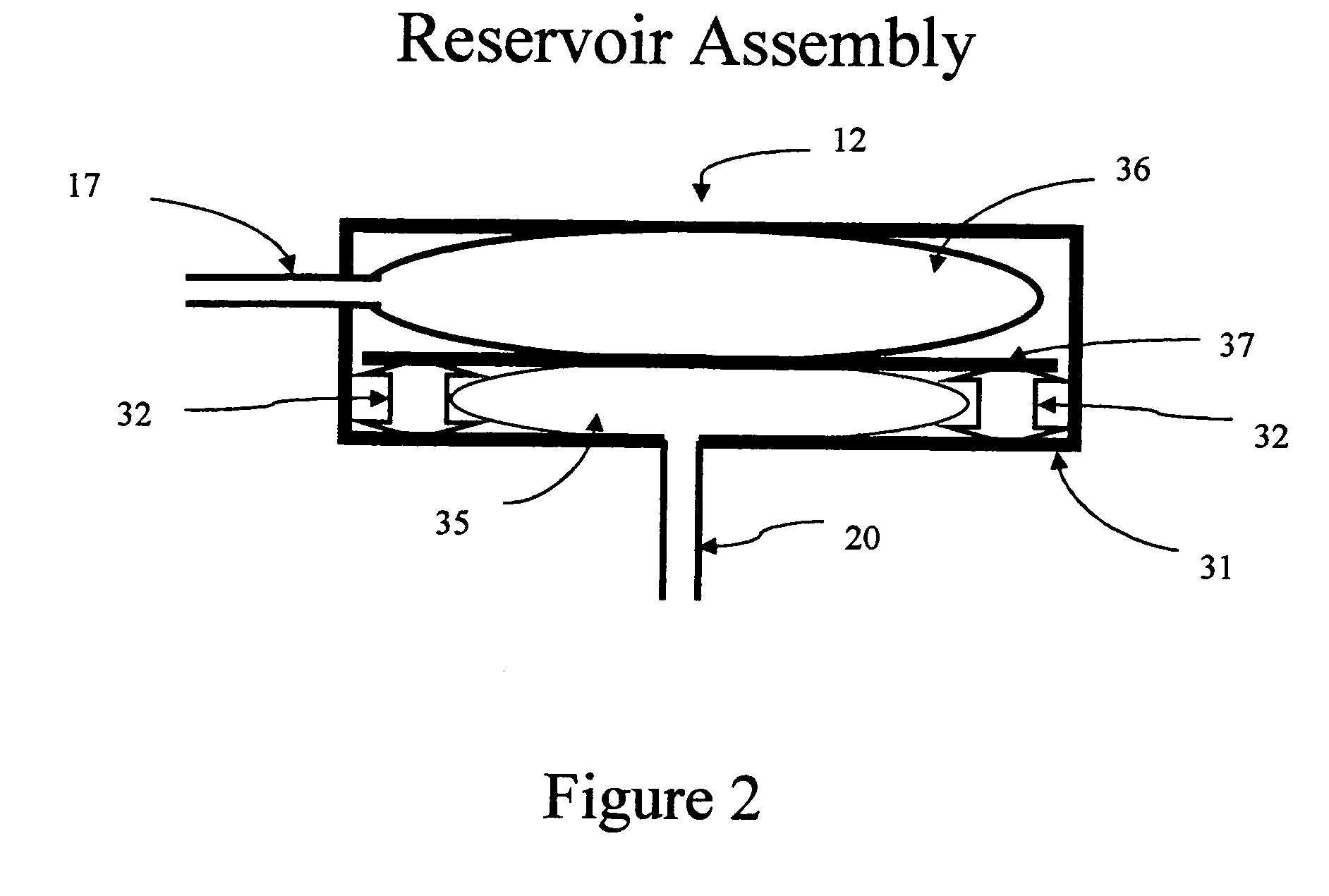Self-calibrating body analyte monitoring system
a self-calibrating body and monitoring system technology, applied in the field of medical devices, can solve the problems of inconvenient user, complicated microdialysis system, and inability to meet the needs of users, so as to avoid interconnection and additional plumbing, reduce the lag time, and increase the flow path length
- Summary
- Abstract
- Description
- Claims
- Application Information
AI Technical Summary
Benefits of technology
Problems solved by technology
Method used
Image
Examples
second embodiment
[0060] The above paragraphs describe the functioning of this second embodiment of microdialysis system 10 when the perfusate progresses from reservoir system 12 to measurement path 14, 15, and 16 along flow paths 17 and 24. In this mode, the dialysate exiting outlet 22 contains a concentration of the body analyte essentially equal to the tissue concentration of the body analyte. Alternatively, perfusate may progress from reservoir system 12 to measurement path 14, 15, and 16 along fluidic path 17 and 18 which bypasses microdialysis needle 11. Valving assembly 40 alternatively selects fluidic path 18 or fluidic path 24. Perfusate moving to measurement path 14, 15, and 16 along flow path 18 has bypassed the microdialysis needle and therefore contains the original concentration of the body analyte. Thus when perfusate from fluidic path 18 enters the measurement path, the measurement process provides an output for which the input is known. In this way, a measurement of the perfusate fro...
first embodiment
[0066] As was the case for the embodiments shown in FIG. 1 and 6, the embodiment shown in FIG. 8 can also be integrated so that the microdialysis needle and the measurement path are on a single substrate. This integration is shown in FIG. 9. The integration is very similar to that shown in FIG. 3, with the exception that chamber 15 no longer contains immobilized enzyme but is a mixing chamber for body analyte laden fluid entering measurement path 15 and 16 at inlet 21 or inlet 7. Mixing chamber 15 may be a tortuous path as shown in FIG. 9 or may be of another geometrical shape as is known in the art. When the body analyte is glucose and the enzyme is glucose oxidase, the dwell time for the interaction of the glucose oxidase and glucose is sufficiently long to permit essentially complete reaction of the glucose oxidase with glucose, but is not so long that mutarotation of the alpha form of glucose to the beta form begins to be a factor. Analysis for the reaction product occurs in cha...
PUM
 Login to View More
Login to View More Abstract
Description
Claims
Application Information
 Login to View More
Login to View More - R&D
- Intellectual Property
- Life Sciences
- Materials
- Tech Scout
- Unparalleled Data Quality
- Higher Quality Content
- 60% Fewer Hallucinations
Browse by: Latest US Patents, China's latest patents, Technical Efficacy Thesaurus, Application Domain, Technology Topic, Popular Technical Reports.
© 2025 PatSnap. All rights reserved.Legal|Privacy policy|Modern Slavery Act Transparency Statement|Sitemap|About US| Contact US: help@patsnap.com



